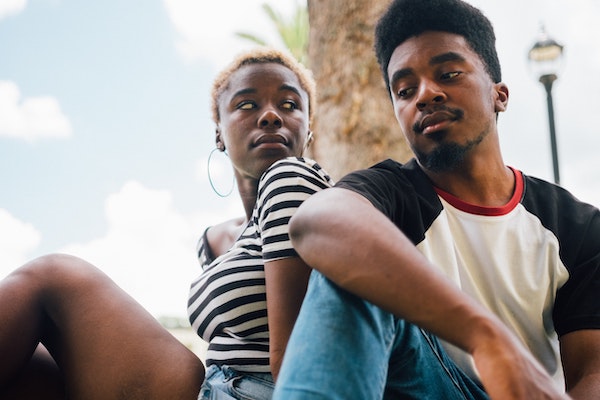When I suggest that a marriage conflict may stem from a childhood wound, some marriage partners protest.
‘Wounds from childhood? Not me. My parents were great!’
‘Why do you say my childhood wounds are affecting my marriage? That was in the past. I’ve moved on and the past doesn’t affect me.’
‘My problem is not because of what I experienced in childhood. It’s all about how my partner treats me today!’
These are comments I’ve heard from clients or workshop participants when I share what’s called the 90/10 principle.
90% of your upset in a conflict is rooted in the past. Only 10% is related to the present.
I used to be skeptical myself, but in my experience with couples, and especially in my own marriage, I see it played out every week.
Whether or not we acknowledge it…our childhood wounds do affect our marriage.
According to relationship expert, Dr. Harville Hendrix’¦
Anytime you have a frustration with your partner that occurs three times or more, and you have negative feelings about it, it comes from childhood.
Emotions buried in your unconscious mind that are based on childhood can drive you to explode or withdraw, behavior that’s not productive in your relationship today.
To understand how this happens, consider with me how childhood wounding occurs.
The childhood wounding experience
Dr. Edward Tronick’s Still Face Experiment shows the interaction between a caretaker and an infant. If you haven’t seen this I encourage you to watch it now. And then let’s explore the implications together.
When the child feels connected with mom everything works well.
But when mom gives the child the ‘still face’ causing a rupture in the connection, the child begins to feel anxiety.
When this happens in real life, we call this ‘un-attuned’ caretaking, and it occurs to some degree in most parent-child relationships.
In busy families, especially large families, it’s hard for caretakers to stay fully attuned to every child. Most of us probably got lost in the shuffle at some point growing up.
Un-attuned care taking may not be intentional but it’s a reality.
When we lose the ‘attuned face’, i.e. the attuned emotions, the attuned eyes, the attuned presence of a caretaker in childhood, we call that a ‘wounding experience’.
Notice how the child uses all her abilities in a desperate attempt to get mom’s attention. If that doesn’t work the child will either continue to act out, or she may withdraw and simply give up trying.
This experience shows how we adapt to childhood wounding by becoming either a maximizer (hailstorm) or minimizer (turtle).
The experience of Sarah and Eric
About a year after Sarah was born, her mom gave birth to twins who cried continually with colic. One-year-old Sarah experienced neglect.
It was not intentional. It was a time when her parents just had to do the best they could, and could not be constantly attuned to Sarah.
That’s why we say’¦
Healthy adults are a result of ‘good enough’ parenting, not perfect parenting.
Sarah’s home was a normal home…
But the wounding that she experienced through unintentional neglect in childhood became a problem later in her marriage.
Sarah’s parents were under-involved. Her pain from those feelings of neglect in childhood (the 90%) was triggered by her husband Eric whenever he gave “more attention to his work than to me’ (the 10%).
On the other hand Eric’s parents were over-involved. He grew up always being told what to think and what to feel. Therefore, the pain of this continual intrusion in childhood (the 90%) was triggered whenever he felt controlled by Sarah (the 10%).
And what did he do? He withdrew emotionally from Sarah when she became “controlling”. What effect did this have on Sarah? It activated more of that old pain of neglect causing even more explosive anger and need to control.
Sarah was the “hailstorm”. Eric was the “turtle”.
Our childhood defenses will always activate the childhood wounds of our partner. And vice versa.
What about you? Do you see where your childhood wounds are affecting your marriage in similar ways?
Which are you? The hailstorm or the turtle? Which is your partner?
Here is a powerful exercise that will help you better understand and empathize with your partner’s childhood wounding experience.
It’s called the Parent/Child Dialogue. Click on the link, print out two copies and follow the instructions very carefully.
As you do this simple dialogue, it’s my hope that you begin to turn your relationship of conflict into a partnership of mutual healing.
Here’s to turning conflicts into a stable connection that facilitates healing of our childhood wounds!
